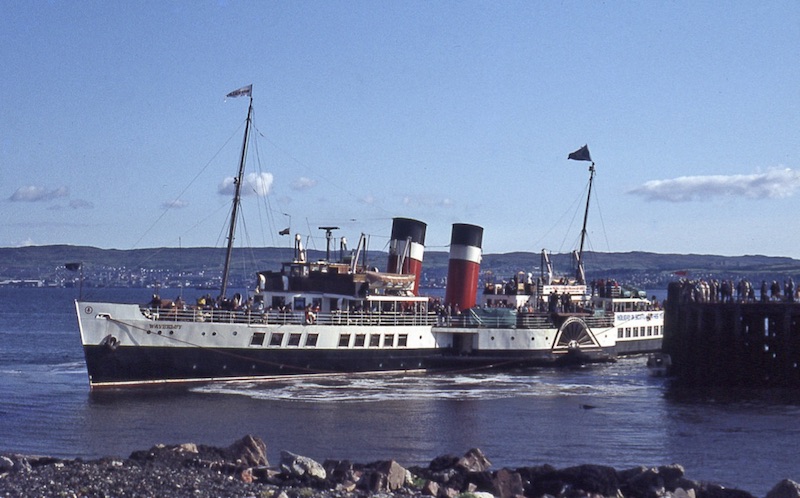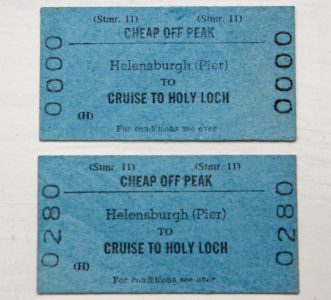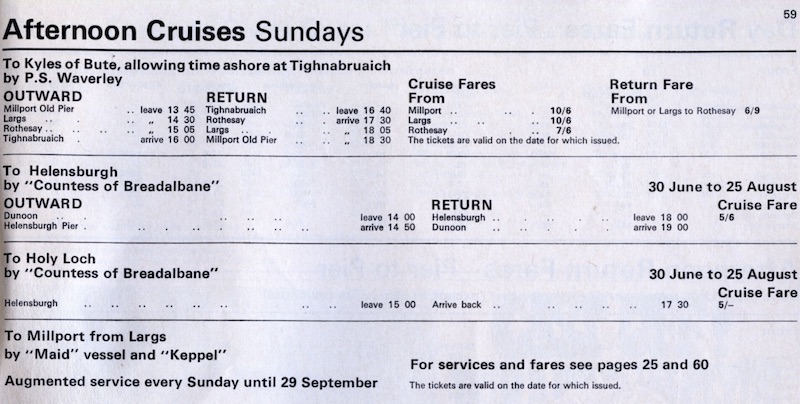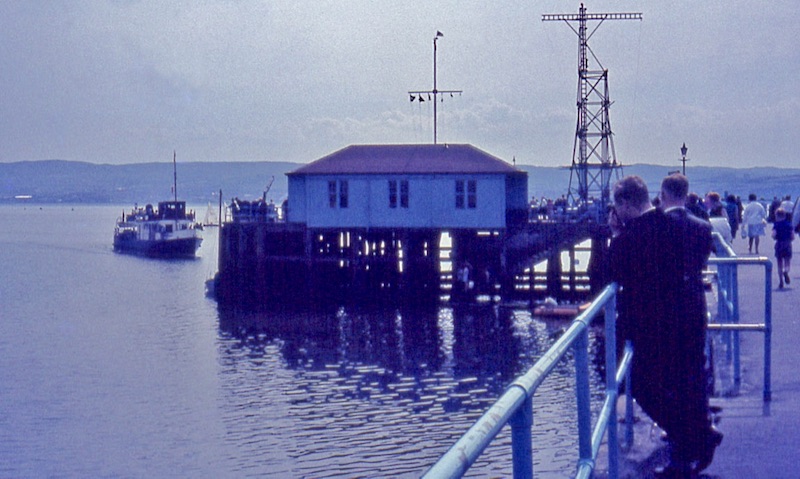By pulling some old tickets out of his desk drawer and matching them to the photographs he took on each occasion, Eric Schofield has created his own brand of time travel. In the second instalment of ‘All tickets please’, he remembers one of the Clyde’s lesser known excursions of yesteryear.
The tickets for the next journeys in this series are for sailings that, on the face of it, seem unremarkable. They were in fact quite straightforward, with no particularly notable events occurring on passage.
However, the stories behind them reflect changes that were taking place without ceremony and almost without notice back in the late 1960s and early 70s, as the Caledonian Steam Packet Company tried to deal with the effects of steamer withdrawals. These changes took the form of reductions to basic services — the result of ever increasing economic pressures and the need to close the gap between rising running costs and restricted revenue-earning capabilities. Some of the CSP’s ideas worked to a degree, whilst others proved less effective, if not adding to the problem.
No. 2 Helensburgh to Holy Loch Cruise
You had to look hard through the 1968 summer timetable to find this excursion, on nine peak Sundays from 30 June to 25 August. It only appeared on page 59, as the last of the season’s listed services.
The impression that the trip had been devised at the last minute, just before the printing of the timetable, was reinforced by a single ‘Errata’ enclosure: the 1400 Sunday sailing of Countess of Breadalbane from Gourock to Craigendoran was corrected to read ‘from Dunoon to Helensburgh’, the outward portion of a Sunday afternoon excursion giving just over 3 hours ashore at Helensburgh before returning to Dunoon at 1800.
In between those two Helensburgh calls, the ‘Breadalbane’ would complete the trip I was about to undertake — a new three-hour non-landing cruise to the Holy Loch. Despite inclement weather, I had decided it was sufficiently noteworthy to take the train down to Helensburgh on Sunday 30 June to sample the first of these new Sunday afternoon cruises.
There were few people on Helensburgh pier (in the rain) to meet Countess of Breadalbane on her arrival, and fewer still getting off her from Dunoon. After boarding I presented myself at the Purser’s ticket window, my 5/- (25p in decimal terms) being eagerly collected in return for a sky blue ticket, No 0000. Wow! here was I, the first fare-paying passenger on this excursion.
I repeated the cruise on the sixth Sunday, 4 August, my ticket on that occasion being numbered 0280. A quick calculation showed that, averaging less 50 passengers per trip, this was never going to be a big revenue earner for the company. It nevertheless re-appeared in both the 1969 and 1970 summer timetables, with a call at Dunoon on the way there and back, the fare increasing to 6/9d in 1969 and 8/- in 1970. The accompanying pictures of the ‘Breadalbane’ arriving and at Helensburgh were both taken on the August trip.
I believe these excursions marked the first time Helensburgh had appeared as a port of call in a CSP timetable since 1951, when the withdrawal of Wee Cumbrae and its Gourock to Helensburgh and Craigendoran ferry service occurred.
All this begs the question – would a more encouraging response from the north bank public to the 1968 reinstatement of Helensburgh calls have given CalMac thoughts of utilising Helensburgh Pier for Waverley’s excursions in 1973, the year after Craigendoran Pier was closed? That scenario did eventually happen later in the decade, following the ship’s re-emergence under the Waverley Steam Navigation banner.

Waverley at Helensburgh in 1980. Did the CSP miss a trick by ignoring Helensburgh after the closure of Craigendoran? Copyright Eric Schofield
All tickets please (1): Excursion to Ardrishaig with return journey up-river to Glasgow
Published on 9 February 2018















